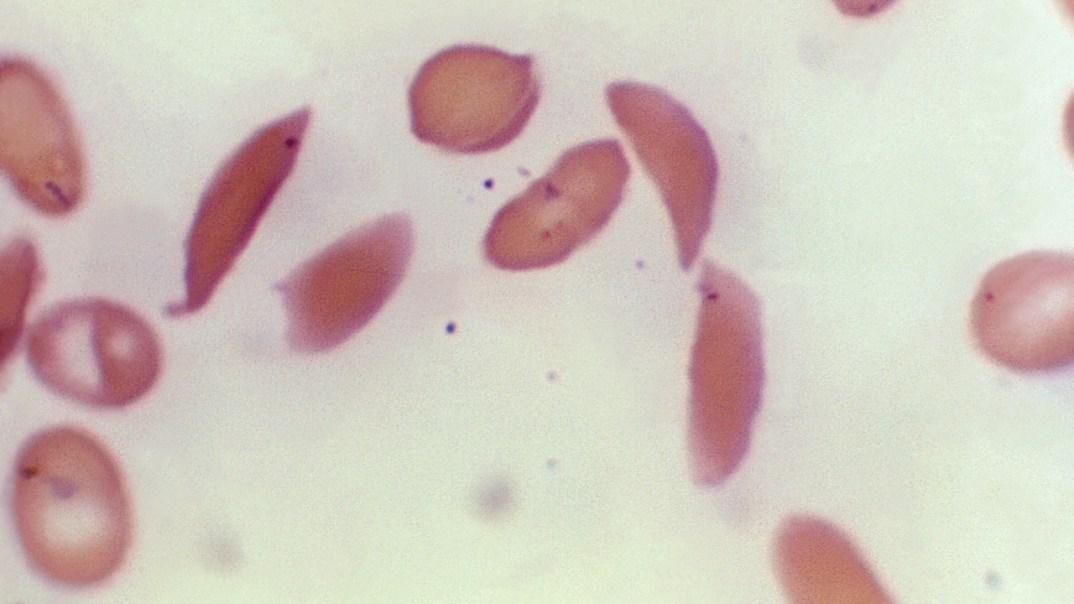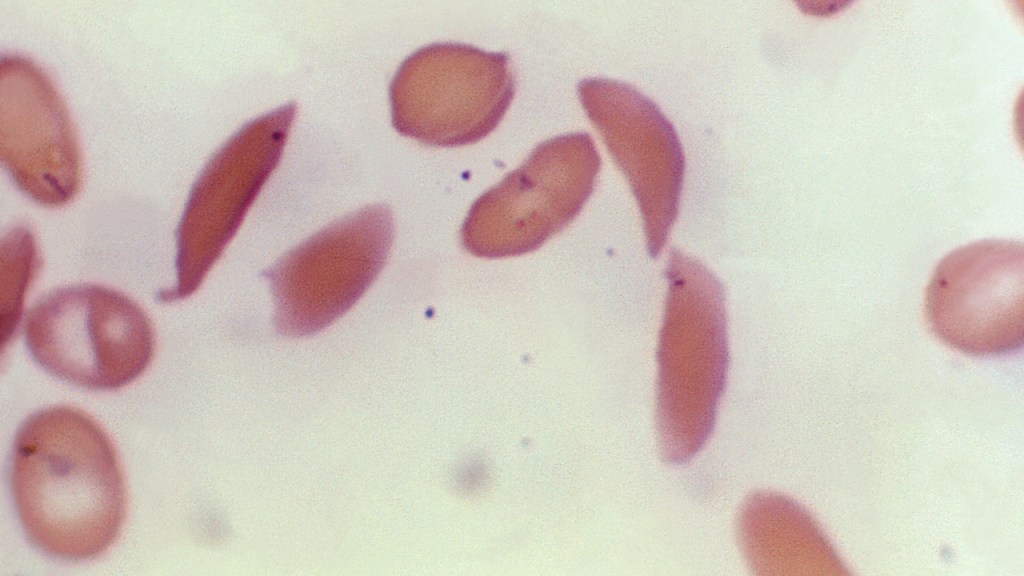Sickle cell affects more families in Africa and India, but new gene therapies are out of reach
Such stark realities make the cost of gene therapies an insurmountable obstacle, experts say. The price tags for the two sickle cell therapies in the U.S. are $3.1 million and $2.2 million although the cost for gene therapies can vary by country.

Gautam Dongre’s two children in India and Pascazia Mazeze’s son in Tanzania live with an inherited blood disorder that turns blood cells into instruments of pain.
Now that new gene therapies promise a cure for their sickle cell disease, Dongre says he’s “praying the treatment should come to us.”
But experts say the one-time treatment is out of reach in India and Africa — places where the disease is most common. Vast inequities cut much of the world off from gene therapy in general.
While access to all sorts of medicine is limited in developing countries, the problem is especially acute with these therapies, which are among the most expensive treatments in the world.
Beyond their sky-high prices, these therapies are extremely complex to give patients because they require long hospitalizations, sophisticated medical equipment and specially trained doctors and scientists. So far, the two gene therapies for sickle cell have only been approved in wealthier countries: both of them in the U.S., and one in Britain and Bahrain as well.

“The vast, vast majority of patients live in an area where they have no access to this kind of therapy,” said Dr. Benjamin Watkins, who treats sickle cell in New Orleans and is also involved in pediatric work internationally. “We as medical professionals, and as a society, have to think about that.”
Access to gene therapies was a major focus of this year’s international summit on human genome editing in London. A subsequent editorial in the journal Nature said high prices leave low- and middle-income countries “entirely in the lurch” and could stymie progress across the field.
Some scientists worry that new cures won’t reach their potential, future treatments may never be invented and the prospect of wiping out diseases like sickle cell will remain a distant dream.
Struggling for Basic Treatment
For gene therapy to even be an option, people in developing nations must stay alive long enough to get it. There, sickle cell disease is more likely to disable or kill than in wealthy regions. Late diagnosis is common and basic care can be hard to come by.
While gene therapy “is a huge leap forward … we can’t forget about those patients,” said Watkins, of Children’s Hospital New Orleans.
Sickle cell disease begins its assault on the body at birth, affecting hemoglobin, the protein in red blood cells that carries oxygen. A genetic mutation causes the cells to become crescent-shaped, which can block blood flow and cause problems such as excruciating pain, organ damage and stroke.
The only other cure is a bone marrow transplant, which must come from a closely matched donor and brings a risk of rejection.
Global estimates of how many people have the disease vary, but some researchers put the number between 6 million and 8 million. It’s more common in malaria-prone regions because carrying the sickle cell trait helps protect against severe malaria. More than 1 million people with sickle cell disease live in India, studies show, and more than 5 million are in sub-Saharan Africa.
Dongre, who lives in Nagpur in central India, has seen the struggles in his own family and among people he’s met as a leader in the National Alliance of Sickle Cell Organizations in India. For many years, awareness of the disease has been lacking, he said, even among some health professionals.
Dongre recalled how his newborn son Girish cried constantly from stomach and leg pain. Doctors couldn’t figure out what was wrong and didn’t diagnose him with sickle cell for 2 1/2 years. When their daughter Sumedha was born, he and his wife had her tested immediately and learned she had the disease too.
Other patients go undiagnosed for a decade or more. Lalit Pargi, who lives in Udaipur in northern India, said he wasn’t diagnosed until he was 16 despite having the tell-tale yellow eyes and skin of jaundice, a common sign of sickle cell. That meant a childhood filled with inexplicable pain.
Recommended Stories
‘God and Google’
Available treatments can reduce the bouts of pain known as “crises.” Dongre’s children, now 19 and 13, take a medicine called hydroxyurea, a decades-old chemo drug that helps prevent the formation of sickle-shaped red blood cells and control the disease. Both have been hospitalized for pain episodes, especially when they were younger.
Other patients in rural areas are dying at very young ages without getting the right treatments, Dongre said.
In July, Indian Prime Minister Narendra Modi launched a sickle cell “elimination mission” that combines awareness, education, screening, early detection and treatment. Dongre lauded the effort but said the country faces huge obstacles to meet its goals.
The situation is much the same in East Africa’s Tanzania, where the health ministry has partnered with drug company Novartis, which makes sickle cell medicine, to improve access to diagnosis and treatment.
Mazeze scrambled for information after her son, Ian Harely, was diagnosed.
“I Googled and Googled and I couldn’t sleep,” said Mazeze, executive director of the Tanzania Sickle Cell Warriors Organization. “After that, I was praying. It was God and Google.”
Her son is now 10 and takes hydroxyurea and folic acid for anemia. They’ve helped, but haven’t eliminated pain episodes like the one that put him in the hospital for two weeks earlier this year.
Still, Mazeze counts herself lucky she can afford treatment at all.
“We have people in Tanzania who can’t even manage folic acid,” she said. “Folic acid for a month is 1,000 Tanzanian shillings – less than a dollar,” while out-of-pocket costs for hydroxyurea can be more than 35 times that.
‘Significant Challenges’
Such stark realities make the cost of gene therapies an insurmountable obstacle, experts say. The price tags for the two sickle cell therapies in the U.S. are $3.1 million and $2.2 million although the cost for gene therapies can vary by country.
The process of giving the therapies is just as big a hurdle.
Patients must go to the hospital, where stem cells are removed from their blood in a process that requires specialized equipment. One treatment, made by Vertex Pharmaceuticals and CRISPR Therapeutics, involves sending the cells to a lab as quickly as possible to keep them fresh and using a gene-editing tool called CRISPR to knock out a gene. The cells must be sent back in liquid nitrogen so they stay frozen until they’re ready to use.
The other therapy, made by Bluebird Bio, doesn’t use CRISPR but involves the same process for patients. In both cases they must undergo chemotherapy before they get back their altered cells by IV, and spend weeks in the hospital. The process can stretch on for months.
“The infrastructure doesn’t exist to make it possible in many parts of the world,” said Dr. David Altshuler, chief scientific officer at Vertex. “There’s great unmet need, but there are also significant challenges.”
Not only do many medical centers lack things like specialized equipment, but health care systems themselves are comparatively skeletal. For example, World Health Organization data shows India and Tanzania both have less than a quarter of the per-capita hospital beds the U.S. has.
Scientists say one possible solution — though not an immediate fix — is to develop easier-to-administer versions of the new therapies. Altshuler said Vertex is trying to find ways to provide the same benefits without requiring chemo, which comes with serious risks such as infertility. His team is working on making a pill that wouldn’t edit genes but would have the same goal: helping the body produce a fetal form of hemoglobin since the adult form is defective in people with sickle cell.
Other scientists are also working on simpler potential cures, including Dr. Stuart Orkin, one of the scientists whose work led to the development of the Vertex therapy.
Top Stories
Orkin said he’s not sure if next-generation treatments like pills will necessarily be affordable.
“Someone’s going to want to be compensated for the development of that pill,” although foundations could help bring it to the developing world, said the Harvard Medical School pediatrics professor, who is paid by the Howard Hughes Medical Institute, which also supports The Associated Press’ Health and Science Department. Experts said governments will likely also be instrumental in getting cures to patients.
Dongre said he hopes gene therapy for sickle cell eventually makes it to India. If it does, he’d like his children to be among the first to get it. Mazeze said she may wait to see how other patients fare but will consider it for her son too.
Both agreed that patients in all countries — rich or poor — should have the option.
“We all are part of one single planet,” Dongre said.
Never miss a beat: Get our daily stories straight to your inbox with theGrio’s newsletter.
















